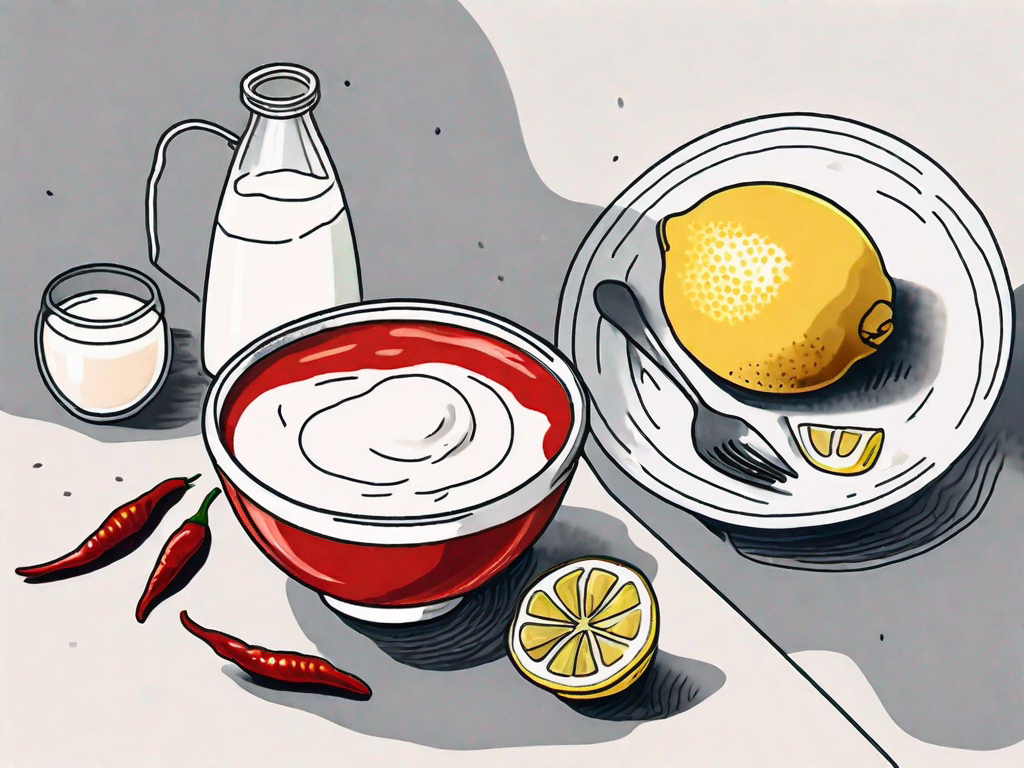Cayenne pepper is a versatile spice that can add a fiery kick to any dish. However, it’s easy to go overboard and end up with a dish that’s unbearably spicy.
Whether you accidentally added too much cayenne pepper or misjudged its heat level, there’s no need to panic. With a few simple techniques, you can rescue your over-peppered dish and salvage its delicious flavors.
Immediate Remedies for an Over-Peppered Dish
When faced with a dish that’s too spicy, there are several quick fixes you can try to neutralize the excessive heat.
One of the most common remedies for an over-peppered dish is to add dairy products. Dairy products such as milk, yogurt, or sour cream can help counteract the spiciness of cayenne pepper. The protein casein in dairy products binds to the capsaicin, the compound responsible for the heat, reducing its impact on your taste buds. Adding a dollop of yogurt or sour cream to your dish and stirring it in gently can mellow out the heat without compromising the overall flavor. The creamy texture of the dairy also provides a soothing sensation, further alleviating the burning sensation caused by the excessive pepper.
Another effective way to counteract the overwhelming heat of cayenne pepper is to introduce sweetness. Sugar, honey, or even fruits like mango or pineapple can help balance out the spiciness. The sweetness acts as a contrast, cutting through the heat and bringing harmony back to your dish. Consider adding a teaspoon of sugar or a squeeze of honey to achieve the desired balance. The natural sugars in these ingredients will not only tame the spiciness but also add a pleasant touch of sweetness to your dish.
Additionally, if you prefer a more savory approach, you can try adding acidic ingredients to your over-peppered dish. The acidity in ingredients like lemon juice or vinegar can help neutralize the heat. The tanginess of these ingredients complements the spiciness, creating a well-rounded flavor profile. Squeeze a bit of lemon juice or add a splash of vinegar to your dish and mix it well to distribute the acidity evenly.
Furthermore, if you have some extra time, you can consider diluting the spiciness by adding more of the other ingredients in your dish. For example, if you have made a spicy curry, adding more coconut milk or tomato sauce can help tone down the heat. By increasing the volume of the non-spicy components, you effectively dilute the concentration of the cayenne pepper, making the dish more palatable.
Lastly, if none of the above remedies work or if you are hesitant to alter the flavor of your dish, you can try serving it with accompaniments that can help balance out the spiciness. For instance, serving a spicy chili with a side of plain steamed rice or bread can help temper the heat. The neutral nature of these accompaniments provides a respite from the spiciness and allows you to enjoy the flavors without overwhelming your taste buds.
Adjusting the Recipe to Counteract the Cayenne Pepper
If the immediate remedies don’t completely alleviate the spiciness, you may need to take more extensive measures to restore the flavor balance of your dish.
Modifying the Remaining Ingredients
One effective way to counteract the cayenne pepper is by adjusting the other ingredients in your recipe. Increase the amount of the base ingredients, such as vegetables or protein, to dilute the spiciness. By adding more neutral elements, you can reduce the overall concentration of the pepper and create a more balanced dish. Consider adding additional vegetables, protein, or starches to tame the spice level.
Altering the Cooking Process
Changing the cooking process can also help mitigate the intense heat caused by cayenne pepper. If the dish allows, simmering it for longer periods or adding more liquid can dilute the pepper’s spiciness. The extended cooking time allows the flavors to meld together and may help mellow out the cayenne pepper’s impact. However, be cautious not to overcook delicate ingredients that may become mushy or lose their texture.
Preventing Overuse of Cayenne Pepper in the Future
While these remedies can save your over-peppered dish, prevention is always better than cure. To avoid experiencing the frustration of an overly spicy dish, there are a couple of measures you can take when using cayenne pepper.
Proper Measurement of Spices
When adding cayenne pepper to your dish, it’s crucial to measure it accurately. The intensity of cayenne pepper can vary significantly, so it’s essential to follow recipes and use measuring spoons to ensure consistency. Start with a small amount, taste as you go, and gradually add more if desired. Remember, it’s easier to add more spice than to remove it from a dish.
Understanding the Heat Levels of Different Peppers
Lastly, familiarize yourself with the heat levels of different peppers to avoid accidental overuse. Cayenne pepper falls somewhere in the middle of the heat scale, with mild varieties like paprika at the low end and fiery ones like habanero at the high end. By understanding the heat levels, you can make more informed decisions when choosing peppers for your dishes.
In conclusion, an over-peppered dish doesn’t mean the end of your culinary masterpiece. With a little knowledge and creativity, you can rescue the dish and restore its delicious flavors. By understanding the impact of cayenne pepper, identifying an over-peppered dish, and using remedies like dairy products or sweet ingredients, you can fix the mistake and turn up the heat, just the right amount.
